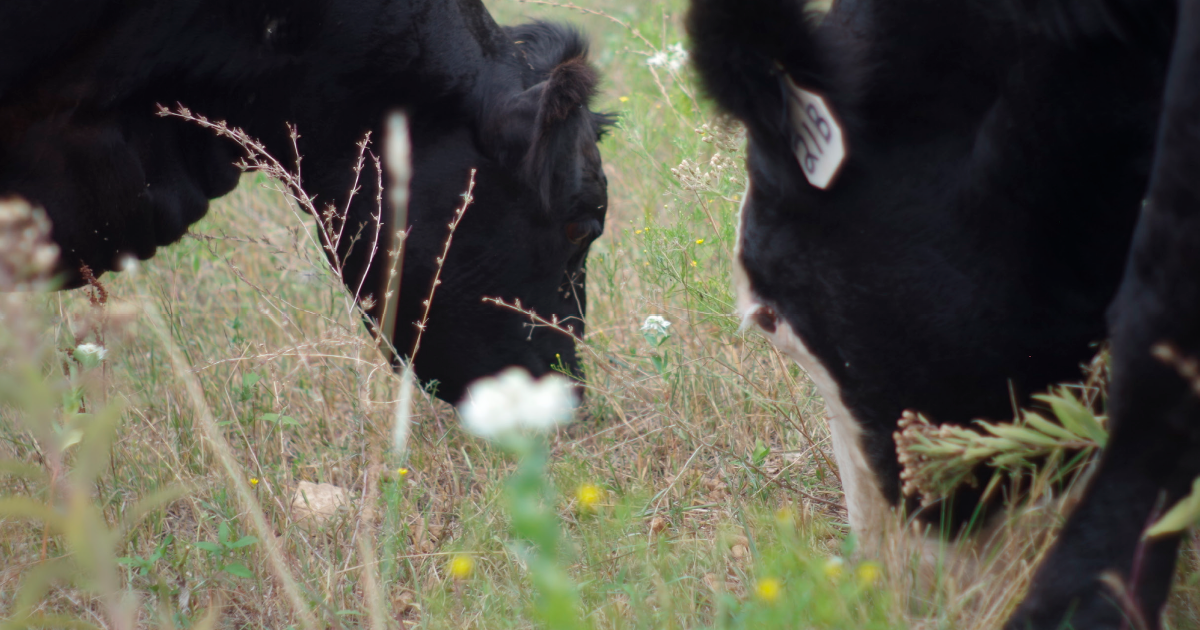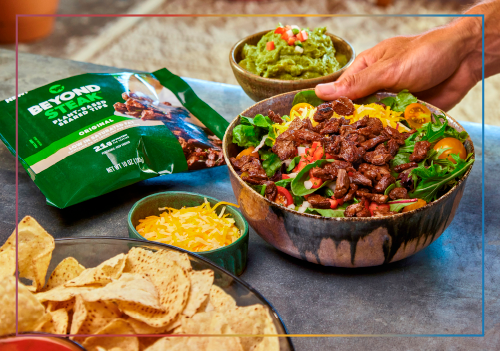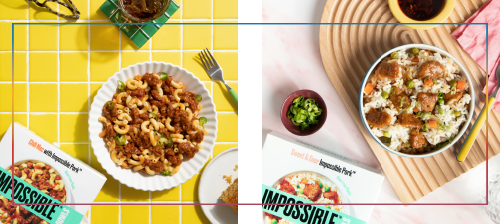By Erica Shaffer
November 2022
Sustainability
Strategies
Today’s meat and poultry processors carefully manage expectations to feed people, preserve the planet and deliver profits in the future


Erica Shaffer, Sosland Publishing Co.
The United Nations expects the world’s population to increase by 2 billion people in the next 30 years – to 9.7 billion by 2050 from 7.7 billion and could peak at nearly 11 billion around 2100. To feed those people, global food production will need to increase 70% by 2050.
The same agency and others continue to sound the alarm about the negative impacts of climate change. In a report on Climate Smart Agriculture, the World Bank noted the role of agriculture in combating food insecurity while calling agriculture “… a major part of the climate problem.”
“It currently generates 19–29% of total greenhouse gas (GHG) emissions,” according to the World Bank. “Without action, that percentage could rise substantially as other sectors reduce their emissions. Additionally, ⅓ of food produced globally is either lost or wasted.”
So, how will food manufacturers feed a growing world population without wrecking the planet? The future of protein production will need to be more sustainability focused than before as consumers increasingly focus on their own carbon footprint.
End-to-end sustainability
Livestock production and meat processing often are implicated for negative impacts on the environment. As a result, producers and processors are focused on implementing farm-to-fork sustainability practices and processes.
The Food and Agriculture Organization of the UN stated that total emissions from global livestock per year represent 14.5% of all “anthropogenic GHG emissions, and cattle are the animal species responsible for the most greenhouse gas emissions representing about 65% of the livestock sector’s emissions.
Industry stakeholders note that farmers and ranchers have relied on conservation and sustainable production practices for decades. Any mitigations to GHG impacts will include animal agriculture. The difference will be steps the industry is taking now to improve future outcomes for the environment. So, segment watchers can expect to hear a lot more about conservation efforts, including regenerative agriculture.
“It’s nothing new, but it’s going back to what farmers have been doing, and nature has been doing, for millennia,” said Nadine Rich, marketing director at Denver-based Teton Waters Ranch. “When you look back several hundred years ago, there were 30 to 60 million bison not to mention deer and elk – ruminant animals that were grazing and moving along and leaving behind fertilizer and airing the soil. That continued to help with soil health. So, taking those types of tenets and doing that with managed grazing of cattle is our way to mimic nature’s systems that we know work.”
Managed grazing of cattle on open pastures of grassland is part of a cycle that enables the use of land that can’t be used for growing crops, but cattle can use for sustenance to create nutrient-dense beef for consumers. At the same time, dirt is becoming soil that is significantly healthier, has more water retention and sequestering carbon “… and creating and keeping in balance an ecosystem that brings life, or biodiversity, into that system,” Rich said.
Evolving animal husbandry practices will accompany mindful stewardship of the land as more consumers express interest in regenerative agriculture and look for product labels bearing label claims and certifications such as Non-GMO, free from and natural. The 2022 Power of Meat study found that many consumers believe that meat and poultry products that are better for them, the planet, animals and/or the workers are interconnected and 86% of people look for production claims on meat packages.
“One-third of consumers specifically look for claims-based meat, particularly ‘US-raised,’ ‘no added hormones’ and ‘no antibiotics use,’” the study said. “Claims-based meat grew over the record 2020 levels (+1.6%) and sales are significantly higher versus 2019 (+17.7%).”
“I think anything, that anything that’s better-for-you – and that could be grass-fed, organic, no antibiotics, no growth hormones – the consumer wants to know more about where their food is coming from and I think that’s a really good thing,” said Dana Ehrlich, chief executive officer and co-founder of Verde Farms, a Woburn, Mass.-based producer of natural meat. “Verde as a brand is both doing a lot of consumer research and focus groups, shop-alongs, quantitative research, qualitative research, to better understand our consumers’ needs and then reaching out to them through various mechanisms. That could be packaging on the shelf, that could be social, digital media campaigns and consumers are responding.”
On the processing side, companies such as Cargill, Tyson Foods and Maple Leaf Foods, to name a few, are investing in facility improvements such as energy-saving LED lighting; smart utility meters to measure and monitor consumption of electricity, gas, water; and outside air ventilation systems with energy recovery features among other upgrades.
And initiatives such as the Protein PACT for the People, Animals and Climate of Tomorrow, a joint venture by 12 organizations representing the meat, poultry and dairy industry along with animal feed and ingredients, aim to verify progress toward sustainability goals across all animal protein sectors. The North American Meat Institute (NAMI) developed a sustainability framework of more than 100 metrics developed through work with sustainability experts, supply chain partners and NAMI members.

Ongoing innovation
While animal protein consumption carries some of the blame for the world’s climate problem, plant-based meat alternatives are marketed as a solution. But a persistent downturn in sales has thrown plant-based meat alternative producers — and the category — for a loop, especially in the past year. Consumer and market research firm IRI found that sales for refrigerated plant-based meat alternatives are decelerating.
“Year-on-year growth started slowing in the second quarter of 2021 and turned negative in the third quarter,” IRI said. “Come November 2021, refrigerated plant-based meat alternative sales decreased 6.6% over November 2020. November sales were up 29.2% over the 2019 levels, but this is much lower than the gains seen in the first few quarters of the year.
“While 2019 and 2020 achieved much of its growth through expanded distribution, assortment only increased 5.3% in 2021 — making maintaining the growth rate much harder.”
With sales of meat alternatives continuing to see pressure from waning consumer interest and inflation impacts on meat shoppers, a segment shakeout could be in the cards for plant-based meat alternative companies.
In October, El Segundo, Calif.-based Beyond Meat Inc. announced plans to lay off approximately 200 employees, or roughly 19% of its workforce. The company also announced further reductions to its fiscal 2022 sales outlook to a range of $400 million to $425 million.
Redwood, Calif.-based Impossible Foods, in the same month, announced layoffs of 6% of its workforce as part of a reorganization plan primarily affecting roles that had become redundant or were incompatible with other parts of the plant-based meat maker’s reorganization plan.
Other companies, including meat processors like Canada’s Maple Leaf Foods Inc., have walked back investments in plant-based meat alternatives. In August, the company announced it was “rightsizing” its Greenleaf Foods, plant-based subsidiary after a financial shortfall due to demand that never occurred.
“We now understand why it did not materialize, and we no longer believe that it will materialize,” said Michael McCain, president and CEO of Maple Leaf Foods, during an Aug. 4 conference call to discuss the company’s second-quarter results. “So, we are altering our business model and dialing back our investment to reflect the goal of profitable growth …”
Chicago-based Upton’s Naturals makes vegan meat alternatives using seitan, a traditional Japanese food that is made by rinsing the starch from wheat and retaining the protein or gluten. Natalie Slater, marketing manager at Upton’s Naturals, has seen this trend of growth and contraction come and go since the 90s. The current cycle stands out because of the money invested in the segment during the past five years or so.
“A lot of it was really driven by brands that were backed by huge amounts of investments or brands that were bought out by conglomerates, or meat producers buying their plant-based counterparts,” Slater said. “And then after a lot of buzz around some of those products, then came lots of copycat products.
“I think what happens is that you get a lot of buzz and trust, and people try things and then there’s burnout or there’s some cannibalization there where there’s just too many of the same product.
“For a company like us that has never really chased trends, we feel like we have a secure spot in the market because we’re just really focused on making products with simple ingredients that taste good and are easy to cook. I think that’s a proven strategy for a lot of brands — just to stick with what you know and stick with what you do well, and you can ride out a lot of those, a lot of the trends, and so far, that’s worked.”
Going forward, consumer demand for the products — although not as torrid as in previous years — will encourage producers to keep innovating and offering new products. In September, Beyond Meat and Taco Bell launched Beyond Carne Asada Steak at locations in Dayton, Ohio. And in October, Beyond Steak launched at Kroger and Walmart stores nationwide, as well as at select Albertsons and Ahold divisions and other retailers across the United States.
“Beyond Steak is a highly anticipated expansion of our popular beef platform and we’re proud to introduce this innovative product to consumers nationwide,” said Dariush Ajami, chief innovation officer, Beyond Meat. “Beyond Steak delivers the taste and texture of sliced steak in a way that is better for both people and the planet.”
Impossible Foods expanded into full meal solutions with the launch of the company’s line of frozen plant-based entrees called Impossible Bowls. The alternative meat maker partnered with consumer packaged goods, meal kit and foodservice brands for plant-based versions of sausage ravioli, pizza and tacos, among other foods.
“And like all Impossible products, these meals are also healthier for the planet: choosing to enjoy our plant-based beef, chicken and pork in each entree accounts for less water consumption, land use and greenhouse gas emissions than their animal protein counterparts,” the company said.
Cultured meat advances
In 2010, Dutch scientists created pork in a lab using stem cells from pig muscles. By 2013, the University of Maastricht in the Netherlands unveiled a hamburger patty that was grown from bovine stem cells.
Kansas City, Mo.-based CRB Group, a full-service facility design, sustainable engineering, construction and consulting firm for biotech, pharma, food and beverage, and science and technology published an analysis of alternative protein manufacturing. In its Horizons: Alternative Proteins report, CRB examined significant challenges facing the segment including scalability, regulation, product safety and sustainability.
“Cell-based and plant-based meat, egg and dairy products are riding a wave of interest among consumers,” the report said. “To capitalize on this momentum, it is imperative for companies to develop, manufacture and bring to market new offerings as quickly as possible. This will require investing in new facilities and retrofitting existing food and beverage facilities with specialized equipment. To do that — and to do it fast — companies need to move away from traditional design-bid-build project delivery and embrace the trend toward turnkey project management.”
A significant challenge facing cultured meat producers is consumer acceptance. The 2022 Power of Meat study found that fewer than three in 10 meat eaters (29%) would be willing to try cultivated meat versus 40% who would not.
“Those who are willing to try cultivated meat point to securing the food supply and feeling it would be better for their health,” the study said. “The latter tend to be people who seek out meat and poultry raised without added hormones, antibiotics and several other production attributes. Other underlying drivers are animal welfare, food safety and the planet.
“Among those not willing to try cultivated meat, 63% are concerned that it is not natural. Other big concerns are that it is too processed or unsafe.”
Still, cultured meat startups have garnered a lot of attention and investment. Companies are creating chicken, lamb and fish without animal slaughter. Aleph Farms, Steakholder Foods, Eat Just, Meatable and other startups are advancing the science behind cultivated animal proteins.
Dutch food tech company Meatable is currently working on cultivating pork products, including sausages and dumplings with plans to launch the items in restaurants in Singapore by 2024. By 2025, Meatable hopes to expand into supermarkets.
Governments are supporting research into cultivated meat as a solution to food insecurity.
Eat Just Inc. secured a $25 million investment from private equity firm C2 Capital Partners to accelerate its growth in China. Plant-based egg alternatives and cultivated meat are part of China’s national blueprint for food security.
President Joe Biden issued an executive order directing Agriculture Secretary Tom Vilsack and the US Department of Agriculture (USDA) to submit a report assessing how to use biotechnology and biomanufacturing for cultured meat. And In October 2021, the USDA awarded Tufts University $10 million to establish the National Institute for Cellular Agriculture.

You might also enjoy:
Overcoming obstacles and chasing innovation, the pet food industry prepares for its promising future.
Looking ahead, producers, processors and retailers must appeal to evolving demographics.
